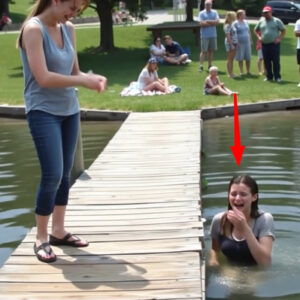A recent event at a middle school has drawn significant community attention after a classroom video emerged showing a physical interaction between a teacher and a student. School officials confirmed that the student sustained a moderate concussion during the incident. The situation has prompted discussions about classroom safety, teacher training, and how schools respond to student injuries.
The footage, which is under official review, has circulated among parents and residents, leading to calls for a thorough and transparent investigation. Education specialists say the case highlights the importance of established safety protocols and equipping staff with conflict resolution skills.
Summary of Events
Initial reports indicate the incident occurred during a routine class session. The video, recorded by a student, appears to show a brief physical exchange at the student’s desk. Witness accounts suggest it began with a disagreement over class participation and then escalated. The student reportedly fell, later showing symptoms of a concussion.
School medical staff provided an initial evaluation and informed the family. Emergency responders later conducted a more detailed medical assessment.
Timeline:
A verbal exchange took place during morning lessons.
Physical contact occurred, followed by the student falling.
Classmates alerted school staff, and the nurse performed an assessment.
Parents were notified; the student received medical care.
The video began circulating the following day.
The district confirmed an investigation within the week.
Understanding a Moderate Concussion
A moderate (Grade 2) concussion is a brain injury that may cause confusion, headaches, dizziness, or short-term memory issues, without loss of consciousness. While generally not life-threatening, medical monitoring is important to ensure safe recovery. Schools may adjust academic workloads temporarily to help affected students heal.
District Response
The district has started an internal review and placed the teacher on administrative leave during the investigation. Officials have reaffirmed their commitment to student safety and said that all actions will follow district policy and legal guidelines.
The district’s code of conduct limits physical contact between staff and students and outlines specific reporting and review procedures for such incidents.
Community and Expert Input
Parents have called for transparency, with some requesting that investigation findings be shared publicly. Student opinions vary, with some voicing support for the teacher and others calling for accountability.
Educational psychologists emphasize that such incidents are rare but can significantly impact school trust. They recommend clear communication, mutual respect, and consistent training to maintain a safe learning environment.
Prevention and Best Practices
Many districts prioritize verbal de-escalation strategies, involving additional staff when necessary. Professional development often covers classroom management, cultural awareness, and conflict resolution.
Some schools have adopted additional safeguards—such as cameras or increased supervision—to provide more context for reviewing incidents.
Importance of Context in Video Evidence
While the video has been central to this case, experts note that it may not reflect the entire situation. Comprehensive investigations combine video review with interviews and other documentation to ensure a fair outcome.
Next Steps
The district will review existing safety measures and expand training programs. Community groups are also encouraging schools to provide more mental health support, aiming to reduce conflicts before they escalate.
Conclusion
This classroom event, which resulted in a student injury, has renewed focus on safety standards, staff conduct, and student well-being. The ongoing investigation and policy review are intended to strengthen trust and create a safer, more supportive environment for all students.





